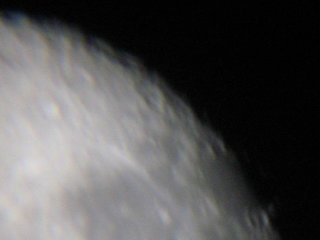Main Page
From Scope F70076
Contents |
I'm a complete beginner what concerns telescopes and astronomy, so I thought that my experience about telescopes might be useful for other beginners. Therefore also, a lot what I am writing here is about what I think, I am just discovering all these things for myself, only for entertainment.
2LyXwz Major thanks for the article.Really looking forward to read more. Awesome.
What can I see through it
I don't really have much idea what can I see through that telescope, but Charles Messier who made the catalog of 110 deep sky objects (galaxies, nebulae and star clusters) in 1780, had a telescope which may be equivalent to today's 3 inch telescope, so I should see all these objects at least somewhat. But of course the skies of Paris were not so light polluted at that time, when there were no electric lights yet, than the skies of the cities today. Indeed I have found that I cannot see as much as Messier did, in addition having by far not such experience of observing as Messier had. Hodierna [1] found 19 deep sky objects already in 1654, using only a Galileo telescope with 1 inch aperture, of which 12 were Messier objects and 7 of these (M31, M36, M37, M38, M42, M44 and M45) were in the northern constellations.
There is a review in Cloudy Nights on the Orion SpaceProbe 3 EQ [2] which has an equatorial mount, but is otherwise optically similar to this telescope. At least it shows that one would be able to see with this telescope the colors of the Orion nebula. I though have not succeeded the see colors of the Orion Nebula in my conditions, but considering how bright the nebulosity is, it seems believable that one can see some colors even with the visibility one magnitude better than mine, which is even not so good visibility, and you don't even have to be in a rural area. So don't be discouraged, your visibility is most probably better than mine.
- First light
- Ring Nebula
- The Great Cluster in Hercules
- Saturn
- Mars
- Praesepe cluster
- The Pleiades
- Andromeda Galaxy
- Orion Nebula
- Triangulum Galaxy
- Venus
- Jupiter
Astrophotography
Astrophotography can be done using an ordinary digital camera which almost everyone has in their pocket, I for example am using Canon Powershot A430. Why it might be a good idea to take photos through the telescope, is that such small camera alone cannot gather enough light, like I have never managed to take photos of the stars such way even with the biggest optical zoom. I mostly use the normal exposure, though all these cameras enable to increase the exposure. This method of astrophotography is called afocal astrophotography, which simply means putting the camera objective against the eyepiece of the telescope, tuning it until the picture looks nice on the LCD screen, and then taking the picture. First of all, the physical zoom of the camera must be increased a bit, until all the field you see in the eyepiece covers the LCD screen. Then you have to focus the telescope, so that the image would be the sharpest. In general, it is very difficult to take photos that way, because you would have to adjust many things at the same time. I have found that it is the best to hold the camera with the left hand in the correct position against the eyepiece, and focus with the right hand. It is completely possible to take photos that way, though not easy, and certainly needs to get used to.
April 16, 2008. I tried to photograph the Moon first, to test the astrophotography with my telescope. You see though, that the image is out of focus. It took some time to focus the image properly, and when I then tried to take the next photo, the batteries became empty, and as a result I have nothing better to present as the result of my first night of testing the astrophotography, than this image.
May 4, 2008. I tried to photograph Saturn, but all I got was just a hazy patch. It seems that focusing for your eye is also good enough for focusing for the camera. I even once saw a clear shape of Saturn on the LCD screen, but with hand I was not able to hold the camera stable enough. I think though that it can be done with a little more practice.


